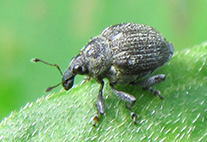Abstract
Zoological nomenclature is the obligate medium by which we communicate taxonomic information, and a series of precise nomenclatural rules are designed to minimize confusion and ambiguity. The longest used, internationally applicable system of nomenclature is “Linnaean Nomenclature” (LN) (Polaszek & Wilson 2005), which has provided a stable platform capable of simultaneously designating discrete taxa and conveying their phylogenetic relationships, through the use of scientific names (nomina; Dubois 2000). Precise adherence to the rules of nomenclature as defined by the International Commission on Zoological Nomenclature (ICZN) is all the more important today when zoologists have millions of taxa to name. The recent importation of exogenous practices into LN is both confusing and inacceptable under the rules of the ICZN. Such practices include the use of a prefix Pan- in the family-series nomenclature. The nomenclature of all taxa from rank subspecies to superfamily is regulated by the International Code of Zoological Nomenclature (ICZN Code; Anonymous 1999). This means that all zoologists who endorse LN should use nomina complying with the rules of the ICZN Code for taxa of all ranks, including those from superfamily to subtribe and additional intermediate ranks of the nominal family group, also called family-series. However, some recent publications using LN do not follow the ICZN Code in several respects, concerning in particular (1) the rules of formation of nomina and (2) their authorship and date. Recent articles involving fossil birds (Smith 2011, 2013; Smith & Mayr 2013), explicitly or implicitly following the ICZN Code, illustrate both problems, representative of these recent practices. We wish to emphasize that our comments are in no way criticisms directed toward the core information of these studies, otherwise extremely useful, but rather a more general and formal invitation to follow more closely the ICZN Code. We found few other published examples of similar practice concerning birds (“Pan-Apodidae” in Mayr & Manegold 2002, also used by Ksepka et al. 2013; “Pan-Trochilidae” in Mayr & Manegold 2002 and Mayr 2007; “Pan-Hemiprocnidae” in Mayr & Manegold 2002; for articles published in a LN frame). We use hereafter the “Pan-Alcidae” example.

